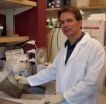(Press-News.org) (SALT LAKE CITY)—Just seven months after University of Utah geneticists took part in a landmark study that sequenced for the first time the genome of an entire Utah family, U of U researchers have taken part in another historic study that is the first large-scale genome sequencing project – 179 people representing three continents – and 60 Utahns played a major role in this study, too.
Published Wednesday, Oct. 27, 2010, in Nature, the study demonstrates how quickly the science of genome sequencing is expanding – first from individuals, then to families, and now to large groups of people representing distinct geographic and ethnic populations, according to Lynn B. Jorde, Ph.D., professor and chair of human genetics in the U of U School of Medicine and a senior investigator and co-author on the study. Rapid-fire technological advances and highly sophisticated computers are giving geneticists the ability to sequence the genomes of increasingly larger groups of people at lower costs, and this study is an example of the research that breakthroughs in technology enable. It highlights as well the significant role Utahns have played in groundbreaking genetics studies.
"This study provides the first large-scale inventory of human genetic diversity," Jorde said. "It also is a good example of how Utahns have helped researchers worldwide. Genetics studies keep coming back to Utah."
The study is part of the 1000 Genomes Project Consortium – an international collaboration of hundreds of geneticists from dozens of laboratories with the goals of cataloging the range of genetic diversity found in people worldwide and characterizing 95 percent of the most common genetic mutations found in humans. Along with being the first large-scale genome-sequencing project, the study made several important findings, including confirmation of earlier work of Jorde's lab group and scientists at the Institute for Systems Biology in Seattle that gave the first direct estimate of the rate of genetic mutation in humans; providing evidence of recent natural selection in new genes; discovering a number of genetic mutations that occur often enough to be considered among the most common in humans; and identifying new "mobile elements" – DNA sequences that randomly reshuffle in the genome.
Earlier this year, Jorde, who is on the 1000 Genomes Project steering committee, was part of the team that was the first to sequence the genome of an entire family – two parents and two children who live in Utah. As part of that study, published in March in Science, he estimated the rate at which genetic mutations are passed from generation to generation at 60 – meaning each parent passes 30 genetic mutations to their offspring. Most gene mutations are harmless, but understanding the rate at which mutations are passed among generations is an essential part of understanding the human biological clock, according to Jorde. To confirm his estimated mutation rate, which was half of what had been estimated previously by indirect methods, researchers in the current study sequenced the genomes of two families of three people each.
"We were delighted that the mutation rate estimate obtained from the 1000 Genomes Project was exactly the same as our estimate," Jorde said.
In the large-scale sequencing phase of the project – in which the genomes of 60 Utahns representing Northern Europe; 60 Nigerians representing Africa; and 30 Chinese and 30 Japanese people representing Southeast Asia were sequenced – the researchers identified a number of new genes that appear to have undergone recent natural selection. That mirrors another study from Jorde's lab, published in Science in July of this year, that showed evidence of genetic natural selection within the past 5,000 to 10,000 years that enables the people of Tibet to thrive in the low-oxygen environment of extremely high altitudes. Finding further proof of natural selection in a broader diversity of people in the current study provides evidence to answer another basic question about humans: are we still evolving?
"These studies provide an unequivocal answer – yes," Jorde said.
The 60 Utahns in the project were part of a number of families who 30 years ago volunteered for a U of U study investigating how genetic variations are passed in families.
As they sequenced the genomes of those three population groups, the researchers also discovered a number of genetic mutations that occur often enough – defined as being found in greater than 1 percent of people – to be considered common gene mutations. With the discovery of these new gene mutations, more than 15 million DNA variations have been identified in the human genome and the researchers believe the 1000 Genomes Project has reached its goal of identifying 95 percent of common genetic mutations. That's a major step that provides a reference of genetic variation for researchers worldwide trying to unravel the genetic bases of countless diseases, according to Jorde.
"People now have a catalog for comparing their research results," he said. "Our ultimate goal is to use this information to understand the causes of disease."
In a third phase of the study, researchers including Jin chuan Xing, Ph.D., a postdoctoral fellow in Jorde's lab, looked at the DNA of 697 people and discovered new "mobile elements" – DNA sequences that pop up randomly in peoples' genomes. Although the function of mobile elements is unknown, they comprise half the human genome and are believed to help propel evolution. This was the first study to look at mobile elements in a large population of people, Xing said.
"We discovered a lot of new ones," he said. "This will help us look at how mobile elements assemble."
INFORMATION: END
BOSTON--A new oral drug caused dramatic shrinkage of a patient's rare, aggressive form of soft-tissue cancer that was driven by an abnormally activated protein, physician-scientists from Dana-Farber Cancer Institute report in the Oct. 28 issue of the New England Journal of Medicine.
A second patient who had a similar tumor that was not fueled by the mutant protein, called ALK (named for the first disease in which it was found, anaplastic lymphoma kinase), failed to respond to the drug, said the researchers, confirming the inhibitor's specificity for the abnormal protein. ...
Scientists have invented methods to scout the human genome's repetitive landscapes, where DNA sequences are highly identical and heavily duplicated. These advances, as reported today in Science, can identify subtle but important differences among people in the number and content of repeated DNA segments.
These copy number variations partly account for the normal diversity among people. Copy number variations might also be why some people, and not others, have certain disorders or disease susceptibilities, and might also determine how severely they are affected.
Until ...
STANFORD, Calif. — The immune system may play a critical role in ensuring the success of certain types of cancer therapies, according to a new study by researchers at the Stanford University School of Medicine. The research showed treatments that disable cancer-promoting genes called oncogenes are much more successful in eradicating tumors in the presence of a signaling molecule secreted by kind of immune cell called a T helper cell.
The finding is important because many drugs now in use in humans are often tested in lab animals with weakened immune systems and many human ...
PASADENA, Calif.—Five years ago, neuroscientist Christof Koch of the California Institute of Technology (Caltech), neurosurgeon Itzhak Fried of UCLA, and their colleagues discovered that a single neuron in the human brain can function much like a sophisticated computer and recognize people, landmarks, and objects, suggesting that a consistent and explicit code may help transform complex visual representations into long-term and more abstract memories.
Now Koch and Fried, along with former Caltech graduate student and current postdoctoral fellow Moran Cerf, have found ...
Pancreatic tumors are one of the most lethal cancers, with fewer than five percent of patients surviving five years after diagnosis. But a new study that peers deeply into the genetics of pancreatic cancer presents a bit of good news: an opportunity for early diagnosis. In contrast to earlier predictions, many pancreatic tumors are, in fact, slow growing, taking nearly 20 years to become lethal after the first genetic perturbations appear.
"There have been two competing theories explaining why pancreatic cancers are so lethal," says Bert Vogelstein, the Howard Hughes ...
Small genetic differences between individuals help explain why some people have a higher risk than others for developing illnesses such as diabetes or cancer. Today in the journal Nature, the 1000 Genomes Project, an international public-private consortium, published the most comprehensive map of these genetic differences, called variations, estimated to contain approximately 95 percent of the genetic variation of any person on Earth.
Researchers produced the map using next-generation DNA sequencing technologies to systematically characterize human genetic variation ...
VICTORIA – Industrial-scale aquaculture production magnifies environmental degradation, according to the first global assessment of the effects of marine finfish aquaculture (e.g. salmon, cod, turbot and grouper) released today. This is true even when farming operations implement the best current marine fish farming practices.
Dr. John Volpe and his team at the University of Victoria developed the Global Aquaculture Performance Index (GAPI), an unprecedented system for objectively measuring the environmental performance of fish farming.
"Scale is critical," said Dr. ...
HAWK-I [1] is one of the newest and most powerful cameras on ESO's Very Large Telescope (VLT). It is sensitive to infrared light, which means that much of the obscuring dust in the galaxies' spiral arms becomes transparent to its detectors. Compared to the earlier, and still much-used, VLT infrared camera ISAAC, HAWK-I has sixteen times as many pixels to cover a much larger area of sky in one shot and, by using newer technology than ISAAC, it has a greater sensitivity to faint infrared radiation [2]. Because HAWK-I can study galaxies stripped bare of the confusing effects ...
A team of international scientists led by Dr Florent Ginhoux of the Singapore Immunology Network (SIgN) of Singapore's Agency of Science, Technology and Research (A*STAR), have made a breakthrough that could lead to a better understanding of many neurodegenerative and inflammatory brain disorders. Their work, published in top scientific journal Science, uncovered the origins of microglia, which are white blood cells specific to the brain, and showed that, in mice, microglia had a completely different origin than other white blood cells. This understanding may lead to the ...
Duke University and University of North Carolina (UNC) researchers report in the November issue of Arthritis Care & Research that narcotics and diagnostic testing are overused in treating chronic neck pain. Their findings indicate clinicians may overlook more effective treatments for neck pain, such as therapeutic exercise. According to reviews cited in the study, evidence to support the effectiveness of therapeutic exercise in treating chronic neck pain is good, yet only 53% of subjects were prescribed such exercise. This information was based upon reported data from a ...



